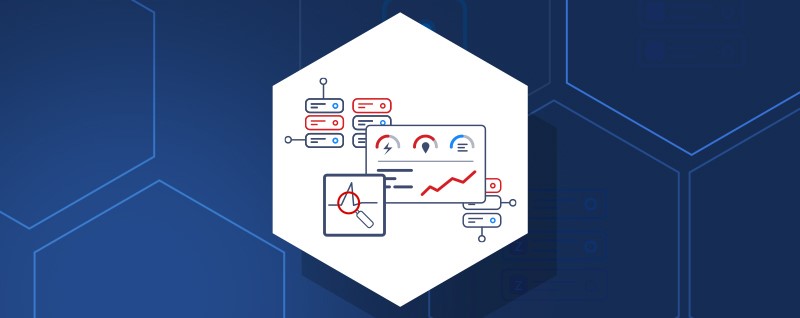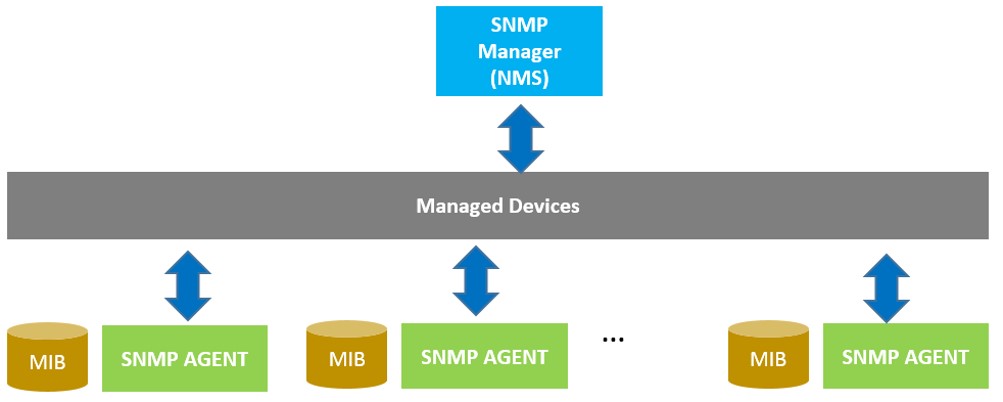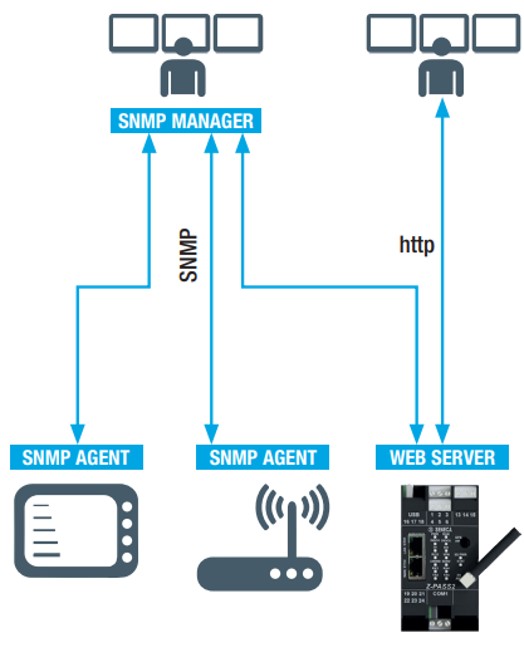 https://blog.seneca.it/wp-content/uploads/2021/04/Sfondo.jpg
https://blog.seneca.it/wp-content/uploads/2021/04/Sfondo.jpg
Modern automation systems integrated on IT and Web platforms are heterogeneous and complex. This is why rapid diagnostics take on a strategic role. It is essential to collect information about the network and devices through appropriate protocols. SNMP (Simple Network Management Protocol) is a protocol belonging to the TCP-IP suite, used for remote monitoring and configuration of network devices, as well as for fault detection and notification.
SNMP operates at layer 7 of the ISO/OSI model. SNMP enables the management and supervision of network devices connected to a LAN or WAN. Typically, the protocol is supported by network devices such as routers, switches, servers, printers and others. SNMP allows administrators and system administrators to monitor network performance, troubleshoot issues, and plan network development.
Typically one or more administrator computers, Managers, are in charge of monitoring and controlling a group of Devices (e.g. a simple node, a router, a printer or any device with SNMP interface) in a computer network. Each managed system thus composed runs a software component called an Agent whose job is to send information reports to the manager using the tools provided by SNMP. The management data is provided to the manager in the form of variables organized hierarchically within a database called the MIB (Management Information Base).
A managed system is composed of 4 fundamental elements: a managed device (Managed Sevice), an agent, a MIB information database, a Manager / NMS (Network Management Station).
The managed device with SNMP interface allows a one-way (read-only) or two-way (read and write) access to the operating information of the device itself. The agent is a software module that manages the information so that it can be “read” by the SNMP protocol or by the network device itself. The Network Management Station runs the applications needed to control the devices.

SNMP and SENECA Controllers
In an automation network with many IT devices, you need to manage the network efficiently so that you can monitor, control and configure them remotely. To do this, you need accurate information about devices, parts and programs in the network.
With SENECA’s Z-TWS4, Z-PASS2-S, S6001 controllers and their programming environments (Z-NET4, Straton), the Simple Network Management Protocol (SNMP) provides optimal support by reporting the status of devices and making targeted interventions to control them. SNMP works very reliably and does not need a particularly complicated architecture. For example, SNMP does not depend on the IP network protocol as a transport medium. Its simplicity, modularity, and versatility have made SNMP a standard supported by most management programs.
For energy applications, such as substation automation, the system provides for a variety of IT devices (servers, routers, switches, client computers, protocol printers, gateways, computers, etc.) to be monitored and synchronized with field devices using SNMP.
Controllers require a lot of data as SNMP managers and process it further. For example, an alarm can be triggered if a critical temperature value is exceeded in a device, or the port occupancy of a switch can be displayed graphically. If the energy control system is to be monitored via SNMP, then SNMP is used as an agent. This is an ideal solution for monitoring unmanned substations. The SNMP server accesses all devices involved in the processes, obtains variable values and forwards them to the superordinate control system in the network.
In addition to SNMP, another diagnostic possibility is offered by the Web Server integrated in the controller, which allows diagnostic pages to be called up directly in the devices via http and a standard browser.
